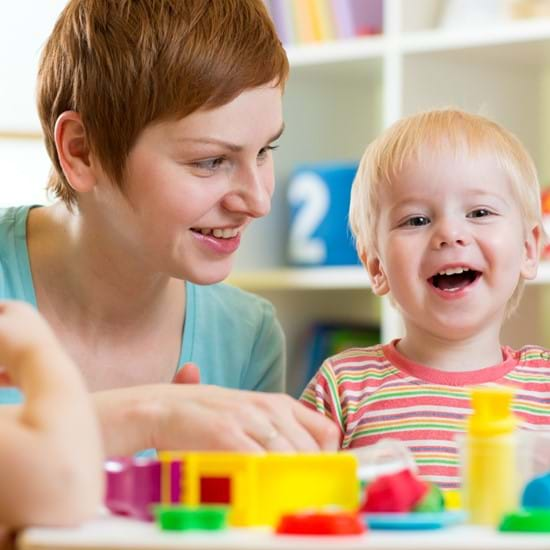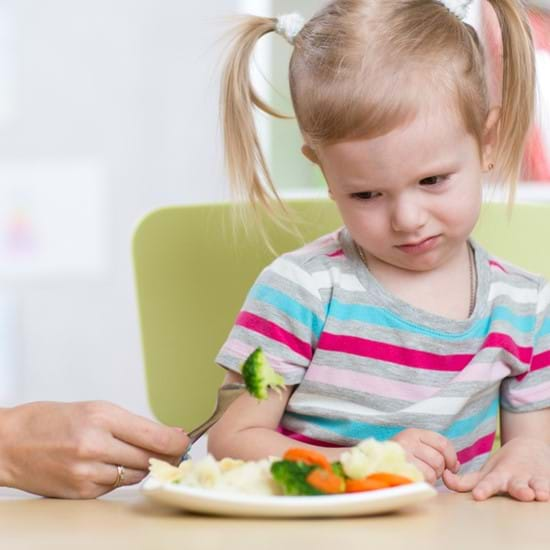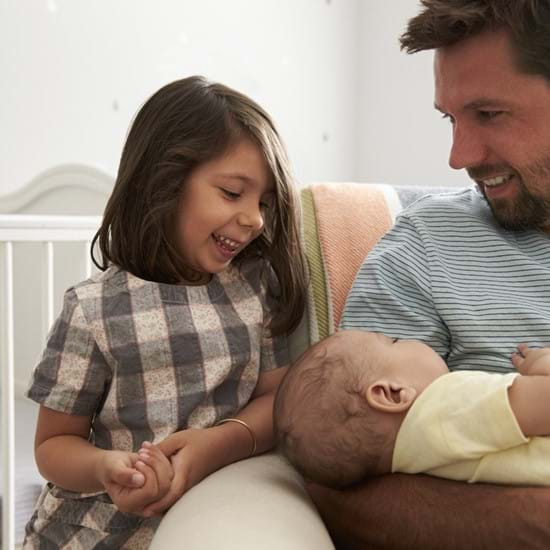
Managing Anxiety in Toddlers During the Pandemic

Written by: Stéphanie Deslauriers
Has your toddler been more anxious since the lockdown? If you’re worried about the lockdown exit, sending your child back to daycare, or how your little one will react to yet another change, here are some things to consider and possible solutions.
A Definition of Anxiety
Anxiety is overestimating the likelihood of an unfortunate event happening, while underestimating our ability to cope with it. It’s having a weak sense of control over a situation. Since toddlers don’t have much control over anything in their lives, it’s good to give them some through age-appropriate choices. If they’re thirsty, ask them to choose between milk and water. When they get dressed, encourage them to choose between two t-shirts. You can also help them gain independence—the cornerstone of child development between the age of 18 and 36 months—by giving them personalized challenges. Doing so allows them to experience success and thus increases their sense of competence, which is part of their self-esteem.
Signs of Anxiety
In toddlers, anxiety can manifest itself in various ways:
- Regressive behaviours (toilet training, thumb sucking, sleep routine, etc.)
- Opposition
- Hostility
- Rigidity in routine
- Crying
- Outbursts of anger
- Increased need for proximity to adults
- Increase in tantrums
In a nutshell, there’s a change in your child's usual behaviour. Rest assured that this change is generally short-lived when it’s induced by a particularly anxiety-provoking situation such as a lockdown (or its exit), grief, moving, a major change in the child's life, and so forth.
Anxiety management strategies:
- Although this anxiety is often temporary, it’s crucial to guide a toddler through this very complex, pervasive and unpleasant emotion. More specifically, avoid scolding a child for regressive behaviours (e.g., a child who was fully potty-trained and has little “accidents” for a while).
- Avoid playing the guilt card or humiliation.
Go for supportive parenting strategies:
- Acknowledge your child’s emotions (“I see that you are angry/sad/that you are afraid.”)
- Offer support (“Do you need a hug?”)
- Respond affectionately to your child’s increased need to be close (there’s no such thing as cuddling your child too much!)
- Encourage your child to seek comfort from a pacifier, milk bottle, teddy bear, blanky, or any other object that’s soothing.
Going Back to Daycare
This day will come soon enough, but right now, the decision to send your child back to daycare is yours and yours alone. Trust yourself and what you think is best for your little one while respecting your convictions. If you want or need (for personal or professional reasons) to send your child to daycare, you have that right!
Depending on how your child reacts during this transition, you can opt for a gradual approach if your situation allows it and your child needs it. Call your child’s caregivers so that they can adapt to his or her needs. The goal is to ease your child back into this routine for a smooth transition.
Whatever you choose to do, it’s YOUR decision and it’s important that you feel comfortable with it. Your child will sense your confidence and will feel more self-assured and secure.


